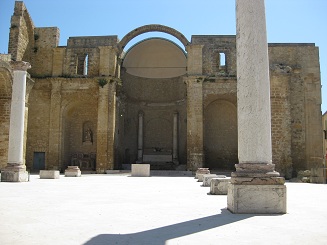
To continue the review of Ananda Coomaraswamy’s book, Spiritual Authority and Temporal Power in the Indian Theory of Government, we will cover feminization and understanding the castes in the microcosm. AKC sees the degeneration of castes as an imbalance of the masculine and feminine elements in society. He explains:
The Sacerdotium and the man are the intellectual elements, and the Regnum and the woman are the active elements in what should be literally a symphony. Over against the intellectuality and continence that are proper to the former, the emotional and erotic qualities of the latter are, in due proportion, necessary and indispensable to society; for without the softer woof to be combined with the harder weft, the social tissue could not be woven at all. But it must also be realized that in any normal decadence (such as that of the last centuries in Europe):
- The progressive “emancipation” of the less intellectual and more emotional elements in the community will mean the gradual substitution of feeling for knowing as a basis for judgment in conduct or art.
- In ethics, the notion of altruism will take the place of that of justice
- In literature, words will more and more be used for their emotive effect than treated as the vehicle of thought.
We ultimately reach just such a condition of sentimentality as is characteristic of modern societies; and it need hardly be pointed out that if the social tissue is to be woven entirely of the softer elements, it cannot be expected to wear well.
We see that Tradition and anti-tradition are in fundamental agreement. The fundamental difference is that the former sees this process as a regression while the latter sees it as a progression. Nowadays in the West, the worst thing is to “offend” someone. I am not suggesting that it is acceptable to deliberately offend people, but the standards are entirely subjective and variable. AKC’s other two points cannot be denied, either.
Rene Guenon, in his book on the same topic, addresses the topic in feminization briefly in a footnote:
Another curious fact is the important role very often played by a feminine element in the doctrines of the Kshatriyas, whether in doctrine regularly constituted for their use, or in the heterodox ideas that they sometimes embrace, In this connection we may even point out that the existence among certain peoples of a feminine priesthood seems to be linked to the domination of the warrior caste.
Obviously, this represents an abnormal situation. It may be possible that Evola saw such disordered peoples and mistakenly took that for the traditional arrangement of castes.
A Personal Interlude

The bhakti elements in the Kshatriya outlook was made clear to me in a voyage of a few years ago. I went to Sicily to visit two Norman castles, one in my ancestral town of Salemi, the other in Palermo. Mostly in jest, I was hoping to find some indications of Rune inscriptions in those castles; of course, by the time of the first appearance of the Normans in Sicily they had all become Catholic and spoke French. What struck me, however, was the beautiful Palatine Chapel in the Norman Palace in Palermo. I tried to visualize myself as a knight attending mass there, keeping in mind that was the center of the rise of a new power.
The King Within
Esoteric knowledge does not simply come from reading ancient texts or studying metaphysical ideas. Using doctrine that the microcosm reflects the macrocosm, we can come to an understanding of the roles and characteristics of the various castes (macrocosm) by knowing the states of consciousness corresponding to them (microcosm). We can return to AKC’s suggestion to use Plato view of the soul; this is also common to Hesychasm and is found in the Philokalia. In this analogy, the Intellect is the brahmin caste, the thumos, the kshatriya, and eros, the vaishya. AKC calls the lower parts the Asuras, which stand for the forces of chaos. We can understand them as the seven deadly sins, and whose activity Dante described in his journey through hell.
In the ideal and normal situation, the thumos and eros are subordinated to the intellect and the forces of chaos are kept in check. The asuras are necessarily passive, without power of their own since they are non-being, yet siphon off psychic energies from the two. Such as we are, the two forces are often guilty of insubordination. The thumos may yield to pride and try to become master of the being; the eros, the drive for higher things, may be expressed instead as lust or gluttony.
That is because there is no stable self, or “king”; there are multiple eddies in consciousness each claiming priority over the others, even if only for a time. We become doubtful, we break promises or resolutions, we don’t know who we are. There is a teaching about the lower self or ego vis-à-vis the true Self, but in reality the egos are multiple. This is expressed as “legion”.
Hence, the task is to crown a king, i.e., one’s True Will, that is subordinate to the Intellect, yet is able to lay down the law for the twin forces and the Asuras. Then victory is assured. AKC writes:
The concept of Victory is of the utmost importance in the traditional theory of Kingship. Exoterically it is by an actual or implied victory over others that a King obtains the throne, but esoterically he is the true Victor who subdues his own passions, allying himself with the Self against himself. The heroism expected of the Knight, whether as King or as the Mortal Soul and Outer Man, is then no longer a matter of merely physical courage, but a symbol and evidence of self-conquest and self-knowledge; autonomy, as we have seen, being the outward tally of an inward Self-control. Whoever has thus found Himself is necessarily both fearless and invulnerable.
There is a rich symbolism documented by AKC, more than can be written about in one post. Here is one such, that will easily be recognized:
There is now a state of peace, where there had been one of anxiety. The com-posure (Samadhi) of the outer rebel and inner leader enables the whole man to rise above the battle even while participating in it. The king is now in reality a “Highness”; his actions are no longer determined by the likes and dislikes of his sensitive part, but inwardly instigated, and being thus strictly speaking “inspired”.
Once this is understood in one’s consciousness, then the relationships of the castes and the King in the community immediately becomes clear.
@Colgero : I was speaking of the opposition of the body and the soul, ”sema” ”soma”
AKC is quite familiar with Plato. I assume you are referring to Plato’s conception of the soul “trapped” in a body? Yet, that is unlike Descartes’ dualism. In any case, such debates are left to the philosophers who want to catalog different thinkers. In the depths, there is convergence, even if the expression of certain ideas may appear divergent.
What this is really about is a phenomenology of the soul, that is, it is not a theory, but rather a guide to encourage the sort of self-knowledge and self-observation that will demonstrate the truth of it better than any philosophical discussion. I prefer the Platonic system to the sheaths or bodies of the Vedanta because I feel that Europeans, even today, share the same race of the soul with Plato; hence, his experience would typically align better with ours.
AKC is gold. One question. To what extent does AKC uses Plato ? Because from what I understand, Plato had a more dualistic approach to the Soul, and Vedanta (and from what I understand, Hindu philosophy) is more of a monistic approach. What about it ?
Here we have a very telling indication of what the “transcendental unity of religions” means. In the Vedantic tradition, we see the “king” or “I” is beyond “likes and dislikes”. We saw the same teaching a few weeks ago in the completely unrelated Spiritual Combat by Lorenzo Scupoli. There is no syncretism involved here, no mingling of outer forms.